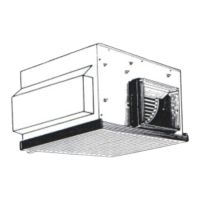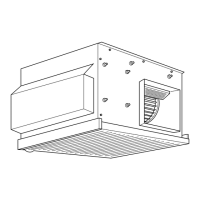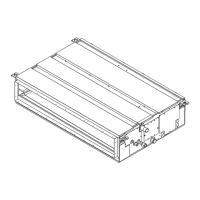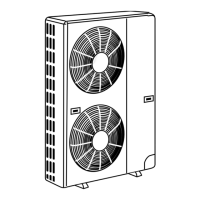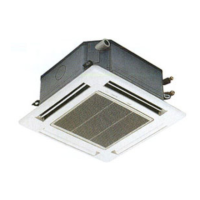
Do you have a question about the Mitsubishi PEH series and is the answer not in the manual?
| Brand | Mitsubishi |
|---|---|
| Model | PEH series |
| Category | Air Conditioner |
| Language | English |
Covers essential safety steps before installation and electrical work, including symbol explanations.
Details precautions for installation site selection and electrical work to prevent hazards.
Provides critical safety guidelines for electrical work during installation, emphasizing grounding and wiring.
Lists crucial checks and precautions to take before initiating the test run of the unit.
Illustrates the model selection process with practical examples, covering load calculation and capacity tables.
Explains how to calculate the unit's energy efficiency, including COP and EER values.
Details the sound pressure levels for indoor units at different octave band frequencies.
Lists sound pressure levels for outdoor units across octave bands for both cooling and heating.
Illustrates the recommended positions for measuring sound levels for indoor and outdoor units.
Offers essential safety precautions and guidelines specifically for lifting the outdoor unit.
Covers procedures for installing the indoor unit, including accessory checks, site selection, and securing.
Details the methods and requirements for securely fixing hanging bolts for unit suspension.
Outlines the steps for physically installing the indoor unit, including lifting and positioning.
Guides on checking the unit's level position and ensuring hanging bolts are securely tightened.
Lists the required specifications and types for refrigerant and drain pipes to prevent condensation.
Provides instructions and precautions for connecting refrigerant pipes and drain pipes.
Explains the correct method for installing drain piping to ensure proper drainage and prevent issues.
Covers guidelines for connecting ductwork to the unit, including insulation and filter installation.
Provides step-by-step instructions for installing the remote controller and its associated wiring.
Lists the parts that should be attached to the outdoor unit upon delivery.
Specifies the minimum clearance requirements around the outdoor unit for proper operation and servicing.
Details the safe methods for lifting and handling the outdoor unit, along with its weight.
Covers specific steps for installing the outdoor unit, including foundation and anchoring.
Provides instructions and warnings for installing refrigerant piping, emphasizing safety and correct procedures.
Explains how to add refrigerant if the piping length exceeds the factory standard.
Highlights critical cautions regarding piping connections and the operation of unit valves.
Details the procedures for performing airtight tests, evacuation, and refrigerant charging.
Emphasizes the importance of proper thermal insulation for refrigerant piping to prevent condensation and maintain efficiency.
Provides general cautions and guidelines related to wiring for the air conditioning system.
Specifies wire thickness, switch capacities, and cable types required for system wiring.
Lists essential checks to perform before starting the test run to ensure safety and proper operation.
Details the steps for performing the test run, including indoor and outdoor unit operations and self-diagnosis.
Explains how to use the remote controller to perform self-diagnosis and check for error histories.
Provides a block diagram illustrating the composition and control flow of the system.
Details the control specifications, including protection functions and their operating parameters.
Explains the control logic for the compressor, 4-way valve, and crankcase heater.
Describes how fan speed is controlled based on operating conditions like temperature and pressure.
Details the conditions and logic for initiating and managing the defrosting cycle.
Explains the control logic for the bypass solenoid valve in different operating modes.
Outlines various service functions accessible via switches, such as abnormality history clear.
Describes the functions of DIP switches on the indoor unit's circuit board for model selection and settings.
Details the functions of switches and connectors located on the outdoor unit's control board.
Lists the conditions and checks required before initiating emergency operation.
Details the step-by-step procedure for activating emergency operation.
Explains how to properly release the unit from emergency operation mode.
Lists potential abnormalities detected immediately after powering on the unit and their troubleshooting steps.
Details common abnormalities occurring during outdoor unit operation and their diagnostic remedies.
Lists indoor unit abnormalities detected during operation and their corresponding troubleshooting methods.
Offers a symptom-based approach to troubleshooting common issues with the air conditioner.
Helps diagnose problems related to incorrect wiring or open circuits between indoor and outdoor units.
Outlines key points to verify before operating the air conditioner to ensure proper function.
Highlights important cautions to follow during operation to prevent failures and breakdowns.
Details routine maintenance procedures for ensuring the unit's performance and longevity.
